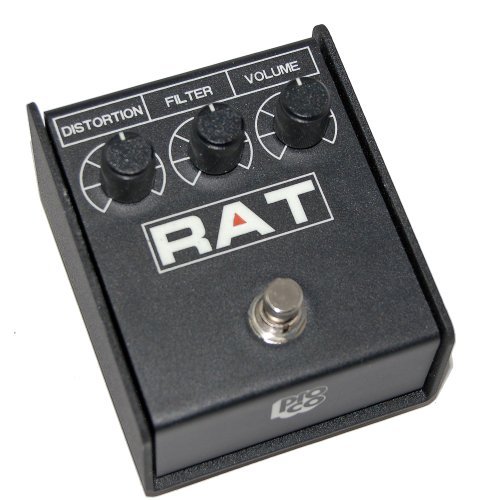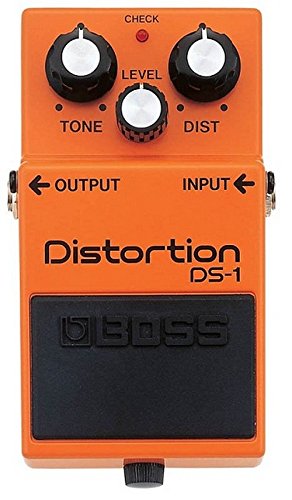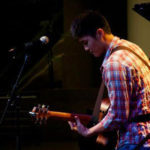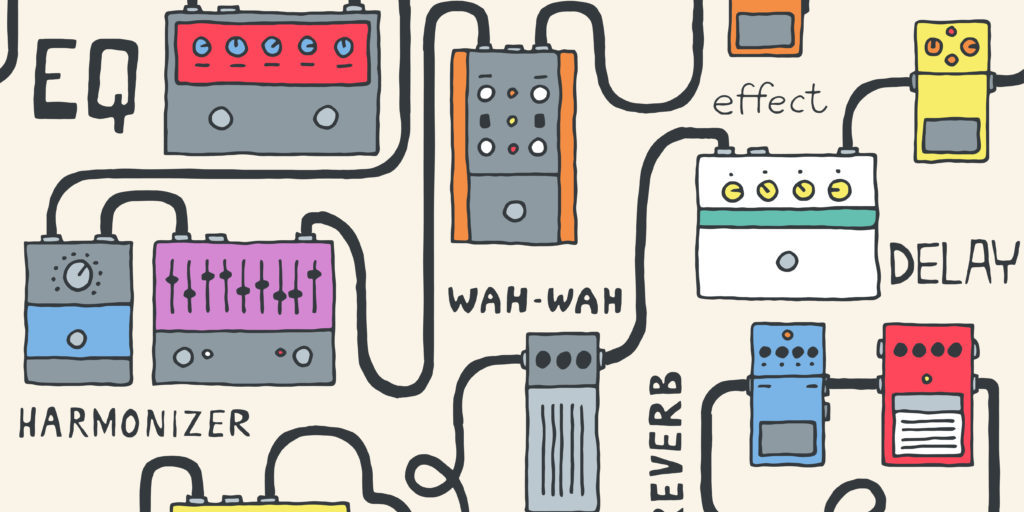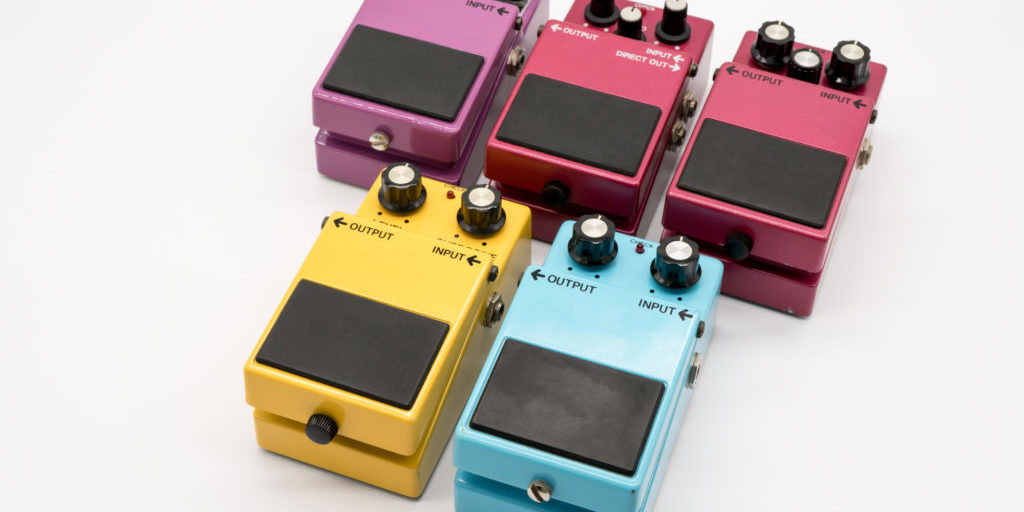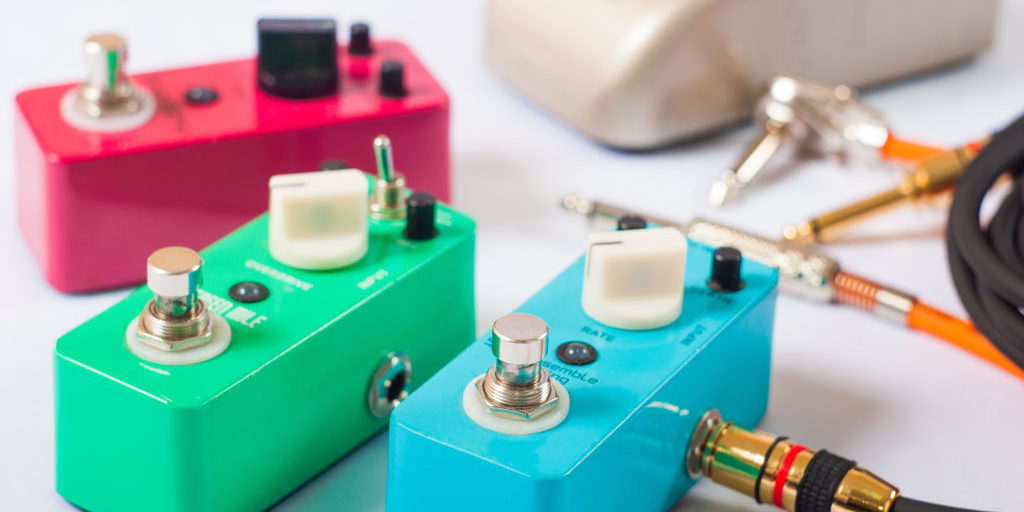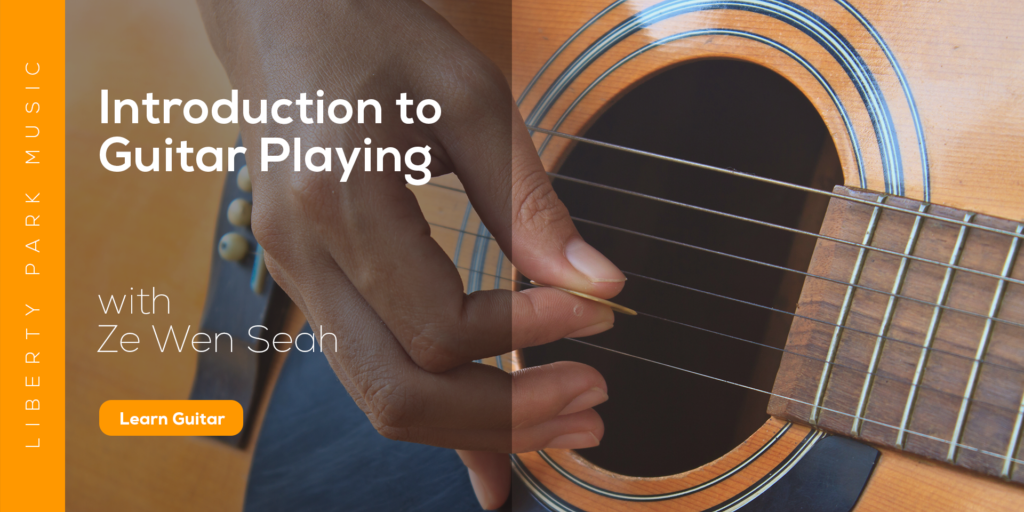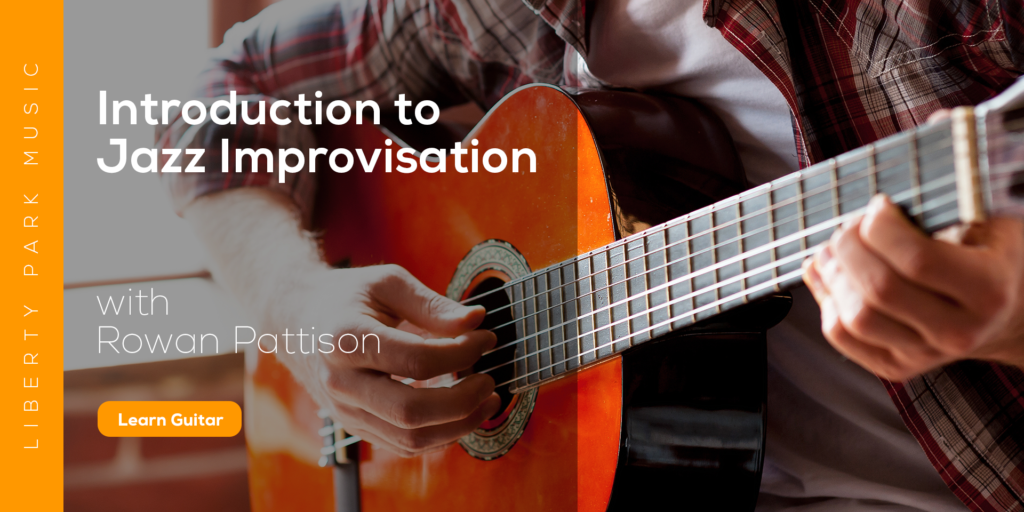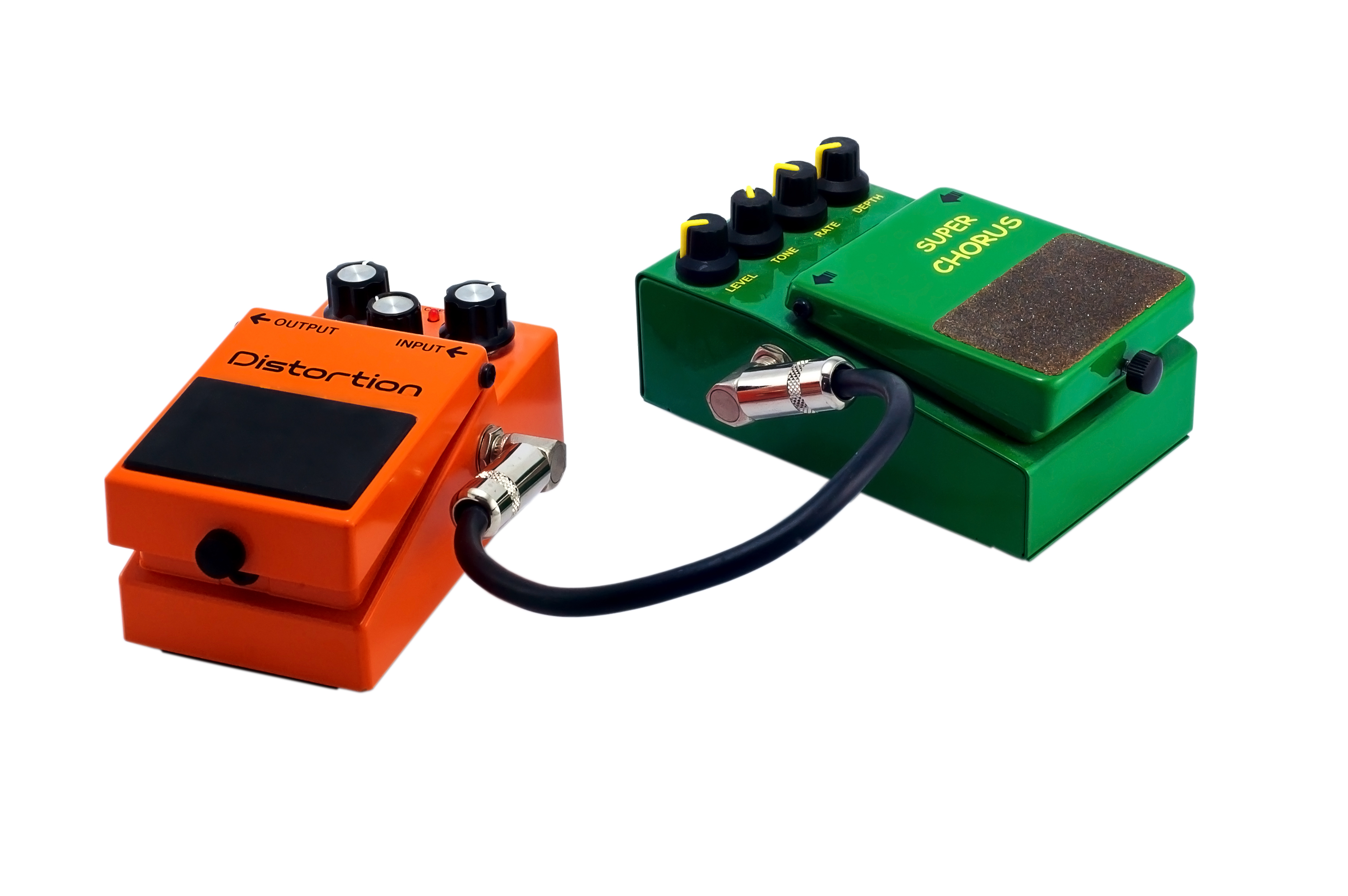
Distortion pedals often can have an identity crisis of some sort; many of them can double as a fuzz or overdrive pedal, and some can even be tweaked to fill in all three roles of overdrive, distortion, and fuzz. Although many of us may prefer to own a pedal that’s a little more versatile, more often than not, a pure distortion pedal will sound and function better than a pedal that’s made to fill multiple roles. When it comes to guitar effects pedals, the saying “Jack of all trades; master of none” often holds true.
That’s the reason why you often see your favourite guitarists continue to choose their trusty analog pedal boards over one of those dazzling multi-effects units that have become very popular over the years. A multi-effects unit may have over a hundred different effects modeled after famous guitar pedals, but a lot of times, the real thing still sounds better (although this is becoming less true with the constant improvement in Digital Signal Processing technology).
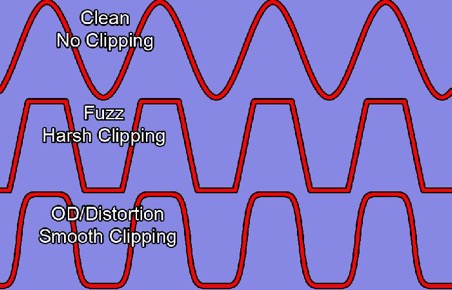
A distortion effect can be commonly heard in rock and metal genres of music. If you’re into playing one of these genres, continue reading for a list of some of the most popular dedicated distortion pedals currently on the market.
1. ProCo Rat 2
Brand New: $69
Used: $45 - $60
Let’s begin with one of the most popular distortion pedals ever made. The ProCo Rat initially went through a number of design changes throughout the 80s, until the release of the ProCo Rat 2 in 1988. Since then, little has changed within the pedal besides a few third-party companies offering modifications that can be made to the pedal. Some of the modifications are purely aesthetic, like changing the color of the LED light, while some can improve the function of the pedal by doing things like replacing the internal components with more expensive and more durable materials.
The face of the pedal reveals a simple and intuitive design with only three parameter knobs: Distortion, Filter, and Volume.
Distortion allows you to set the amount of gain going into the distortion effect, filter works like an EQ that allows you to roll off any sharp and ice-picky sounding high end, and volume lets you set the output volume level.
A feature that sets the ProCo Rat 2 apart from many of its competitors is actually the use of a filter parameter, rather than a typical tone or EQ knob. While a tone knob usually accentuates specific frequencies, the filter knob works by slowly rolling off the high-end frequencies while retaining all the low-end. This gives the Rat its signature dark sounding distortion.
It’s simple design and great sounding distortion tone is the reason why this pedal can be found on the pedal boards of many famous artists including Jonny Greenwood, John Scofield, and the late Kurt Cobain.
Buy here
2. Boss DS-1
Brand New: $49
Used: $34 - $45
Any list of distortion pedals would be incomplete without the inclusion of the BOSS DS-1. Just like the ProCo Rat, the DS-1 is another extremely popular distortion pedal, and it may just be the most popular distortion pedal on the planet. Almost any guitarist that has dabbled in distortion effects has owned a DS-1 at some point.
The DS-1 comes housed in BOSS’s typical rugged and durable chassis. Any pedal built by BOSS will likely last for decades.
While one of the reasons why the DS-1 is such a popular choice is its relatively low price, another one of the reasons is its simple to use controls. Just like the Rat, the DS-1 comes with three adjustable parameter knobs: Tone, Level, and Distortion.
As you can see, the DS-1 and Rat both have very similar controls, but what makes them different is while the Rat has a filter parameter, the DS-1 uses a tone parameter instead. The tone knob on the DS-1 works by accentuating certain frequencies, which allows you to shape your tone to be dark and wooly, or sharp and bright. While tone and filter work very differently from each other, it’s impossible to say one is better than the other as this really comes down to subjective preference. Some people like the sound of the Rat’s filter, while others prefer to use a tone parameter to shape their distortion.
As I mentioned earlier, this is one of, if not the most, popular distortion pedal on the planet, so it’s no surprise to see it on the pedal boards on artists like Steve Vai (it is said that he has two on his pedal board), John Frusciante, and Mike Einziger.
Buy here
Learn with LPM
If you are looking to feel comfortable with playing basic major and minor chords, power chords, and apply different strumming techniques to your practices with Ze, check out his course called Rhythm Guitar
3. Xotic SL Drive
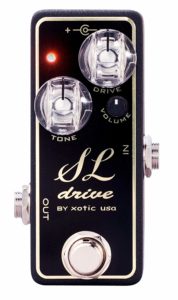
Brand New: $124
Used: $60 - $110
Here is another really easy to use distortion pedal that has an additional feature that many guitarists with a crowded pedal board will love: it’s tiny!
Thanks to its tiny chassis, this pedal really takes up almost no space at all on your pedal board, and just like any other Xotic effects pedal, it sounds great. Additionally, since all Xotic pedals are made in the USA, its high build quality is guaranteed.
The SL Drive draws inspiration for its sound from a classic Marshall Model 1959 amp head. This puts the massive 50W power of a classic amp head into a tiny pedal. The resulting distortion tone from the SL Drive very closely matches the tone of one of the famous Marshall Plexis.
On the face of the pedal lies three very simple to use parameter knobs: Tone, Volume, and Drive. In this case, the drive parameter works like the distortion parameter in the previous two pedals - as a way to set the gain going into the distortion.
Inside the pedal is a dip-switch that allows you to select between emulating a Super Lead or Super Bass amp head. Both of these options provide very different sounding tones, but since it’s an internal switch, it’s really one of those things that you set once, then leave it as it is.
Notable users of the Xotic SL Drive include Guthrie Govan and Andy Timmons.
Buy here
4. MXR Fullbore Metal
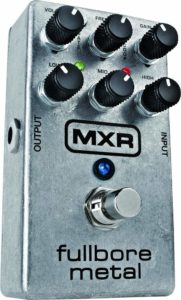
Brand New: $99.99
Used: $40 - $65
Here is a distortion pedal that was built specifically to please the complex specifications of metal heads. One of the main features of the Fullbore Metal is the inclusion of a noise gate built into the pedal. Considering the high amount of gain available in this pedal, having a noise gate is almost a necessity. When turning up the gain on any pedal, not only does it bring up the volume of your guitar, it also turns up the volume of any unwanted noise caused by factors like a noisy power supply, radio interference, or the classic 60 cycle hum in single coil pickups. Usually, when using such a high gain distortion pedal, guitarists will place an additional noise gate pedal after the distortion, however in this case, the noise gate is already built into the pedal, saving you precious real-estate on your board.
Another thing that immediately stands out with this pedal is the inclusion of six parameter knobs that allow you to control volume, frequency, gain, low, mid, and high. This large number of adjustable parameters allows you to really shape your distortion tone.
Instead of a single tone or filter parameter that allows you to adjust the tone of your distortion, four dedicated EQ knobs are provided. High and low allow you to adjust the amount of high and low frequencies in your tone, while mid lets you adjust the amount of mid range you can hear. The frequency knob allows you to select where in the mid range frequency you’d like the mid knob to affect. This is useful as the midrange frequencies lie across a wide sonic spectrum.
Additionally, two buttons labeled Scoop and Gate are provided. Activating scoop will cause a boost in the high and low frequencies, resulting in a scooped tone. The gate button activates the noise gate. Within the pedal, a trim knob is provided to adjust the sensitivity of the noise gate.
As you can see, this is a highly versatile distortion pedal, which explains why many popular artists like Wolfgang Van Halen and Pat O’Brien have been spotted using it.
Buy here
Final Note
As you can see, distortion pedals come in various sizes, and they also come with a varying number of features and adjustable parameters. Most distortion pedals are actually quite simple to use as the distortion effect itself is a rather simple effect. However, distortion pedals do sound vastly different from each other, so it’s important to spend some time auditioning them either in person, or by checking out some YouTube demos in order to make an informed purchasing decision.
Is there a distortion pedal that you feel should be included in this list? Feel free to let us know in the comments section!
About the Author: Ze
Ze first began his journey playing original music and top 40s pop tunes around the country's popular venues. Eventually, through the music of John Mayer, he found a strong attraction to blues music. Ze has years of experience teaching beginners and intermediate guitarists. Currently with Liberty Park Music he is teaching Introduction to Guitar Playing for Complete Beginners, Rhythm Guitar to learn about strumming, chords and more, Guitar Essentials as a fast-track review course, and lots of Song Lessons on pop and rock hits.

